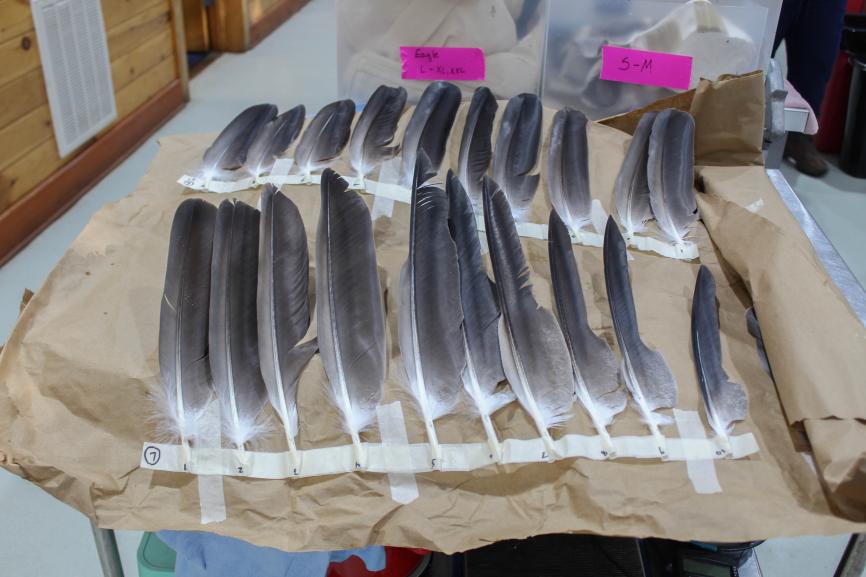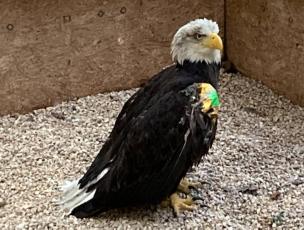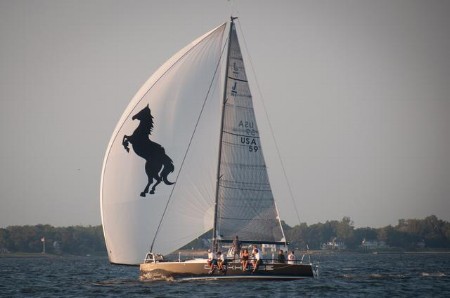It is called “imping.” It’s for the birds. And it just may give a bald eagle from Virginia’s Eastern Shore a shot at flying again.
According to The National Audubon Society, the term “imping” is based upon the Latin “imponere” which means to place upon or fix. Imping dates back to the 1240s, when Holy Emperor Frederick II of Hohenstanfen (a princely German family) described replacing broken feathers on raptors used in falconry. Feathers grow slowly, so replacing damaged feathers with new ones allowed injured raptors to return to hunting much more quickly. Today, the practice is still used in falconry and wildlife rehab. The replaced feathers fall out when the bird eventually molts and grows new feathers.

The Wildlife Center of Virginia imped a bay-area eagle on Oct. 24. Identified as eagle #21-3026, the bird was found in Temperanceville, Va., stuck in a wastewater treatment pond. Believed to be female, she was covered in grease and was unable to fly. She was captured by a volunteer and taken to the Wildlife Center. Upon examination, the eagle was found to have lead poisoning, which is unfortunately common in eagles since they will scavenge animals that have been killed with lead shot by hunters. She was still unable to fly, but she did not appear to have any serious injuries to her wings.
Her lead levels were not tremendously high, but could still be fatal if left untreated over time. She was treated with chelation therapy for the lead, and was also given fluids to ease her dehydration. After successful treatment, #21-3026 seemed strong and was placed in a large enclosure where there was room to fly. But she did not fly. Further examination revealed that the poor bird was chewing on and damaging her own feathers.
This is where imping comes in. Doctors at The Wildlife Center replaced the damaged feathers with healthy feathers from another eagle. Today, the technique uses more modern materials than Frederick II used, but the basic idea is the same. New feathers are simply glued in place. The procedure uses everyday materials like superglue and match sticks to literally glue the new feathers onto the wing skin. The process is not painful to the birds. The most important part of the process is aligning the new feathers so they match the adjacent feathers and work properly for flight.
To date, eagle#21-3026 is flapping her wings around her enclosure and jumping into the air for a few moments, but is still not flying like she should. We hope that changes soon. You can follow her progress at wildlifecenter.org/critter-corner/current-patients/bald-eagle-21-3026.
–Kendall Osborne



